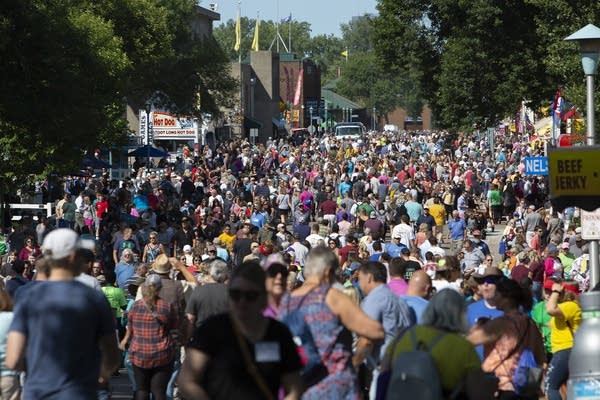As Minnesota State Fair returns, have we seen 'peak fair'?

A crowd packs onto the street on the opening day of the Minnesota State Fair on in Aug. The fair set a record attendance that year of more than 2.1 million people, capping years of growth. It's unclear when -- or whether -- that growth will resume.
Christine T. Nguyen | MPR News 2019
Go Deeper.
Create an account or log in to save stories.
Like this?
Thanks for liking this story! We have added it to a list of your favorite stories.


